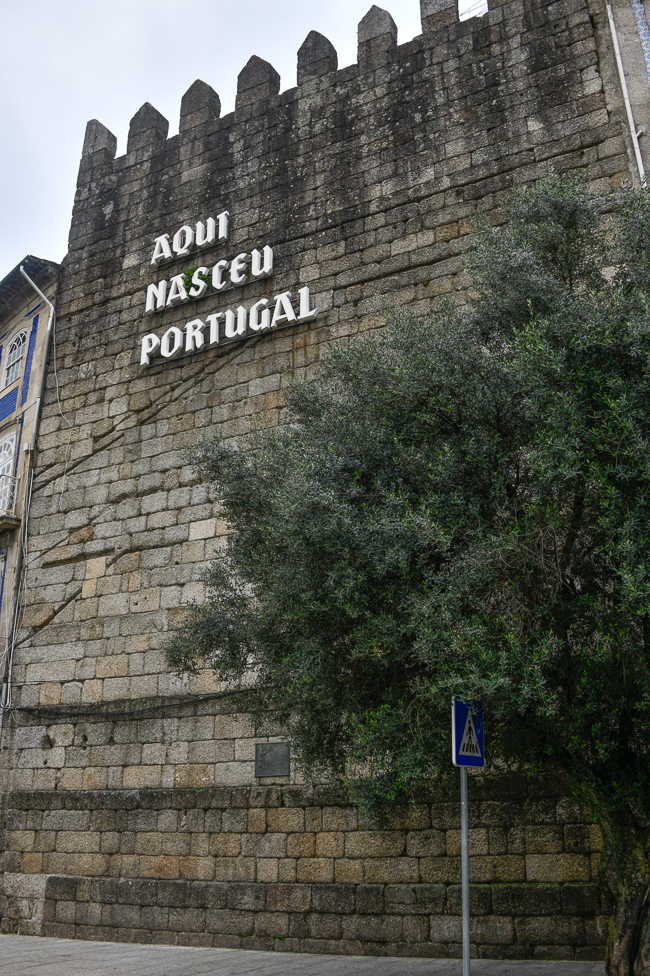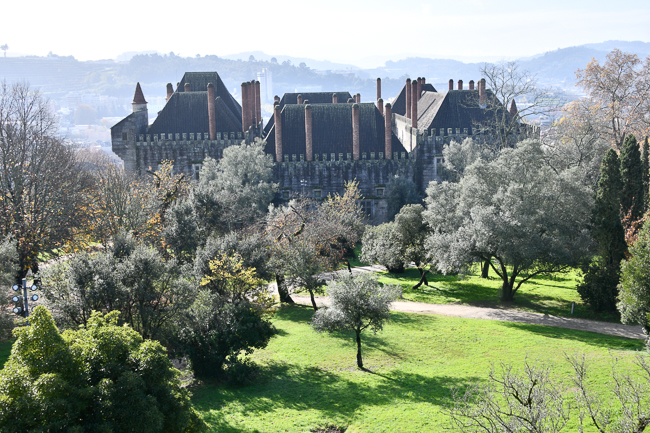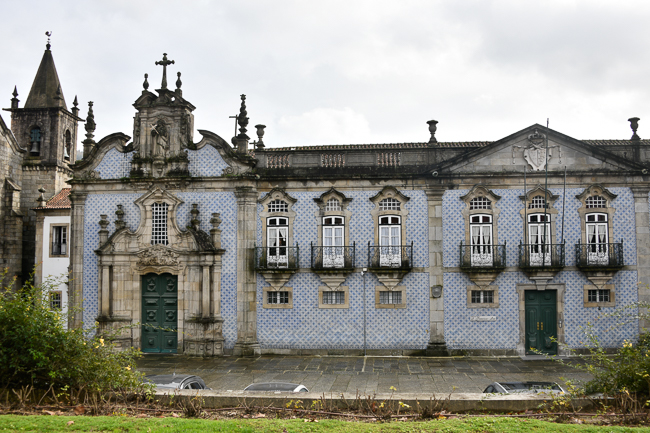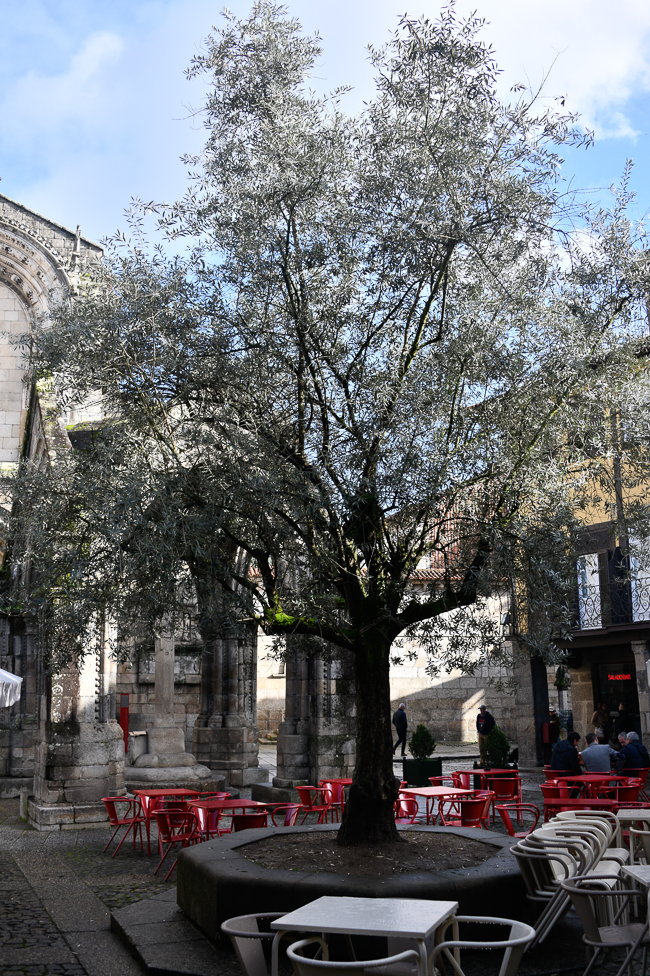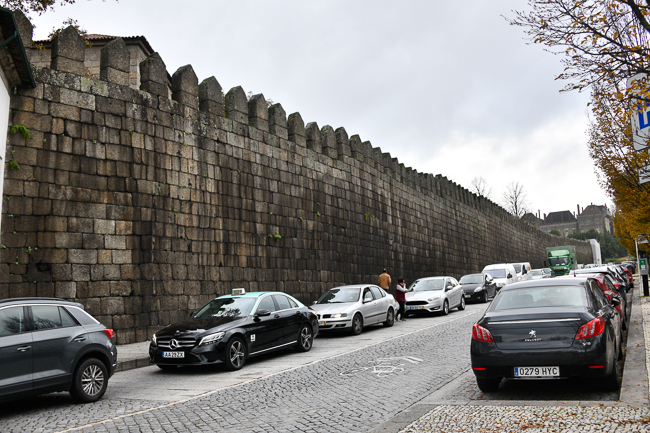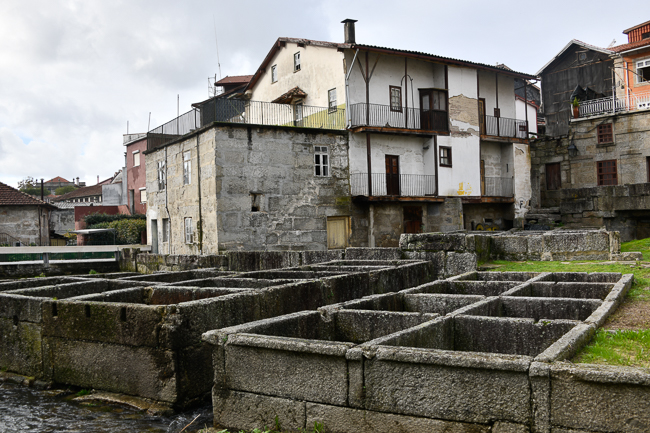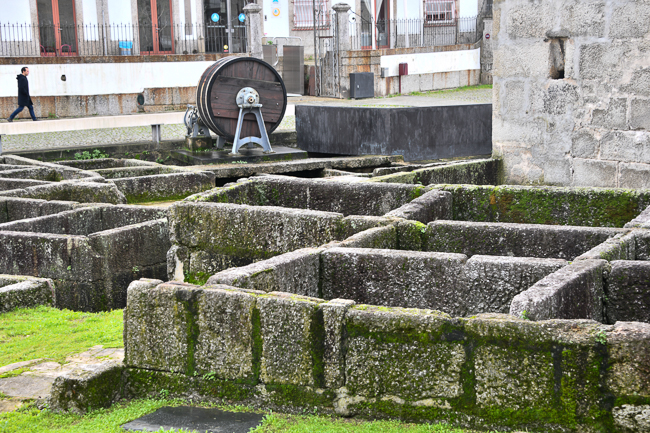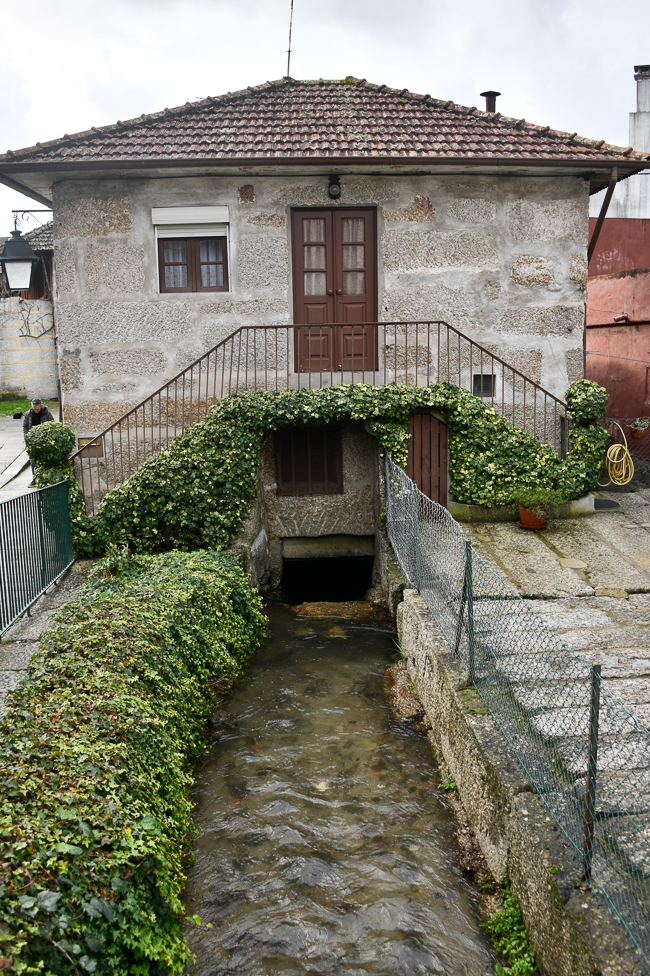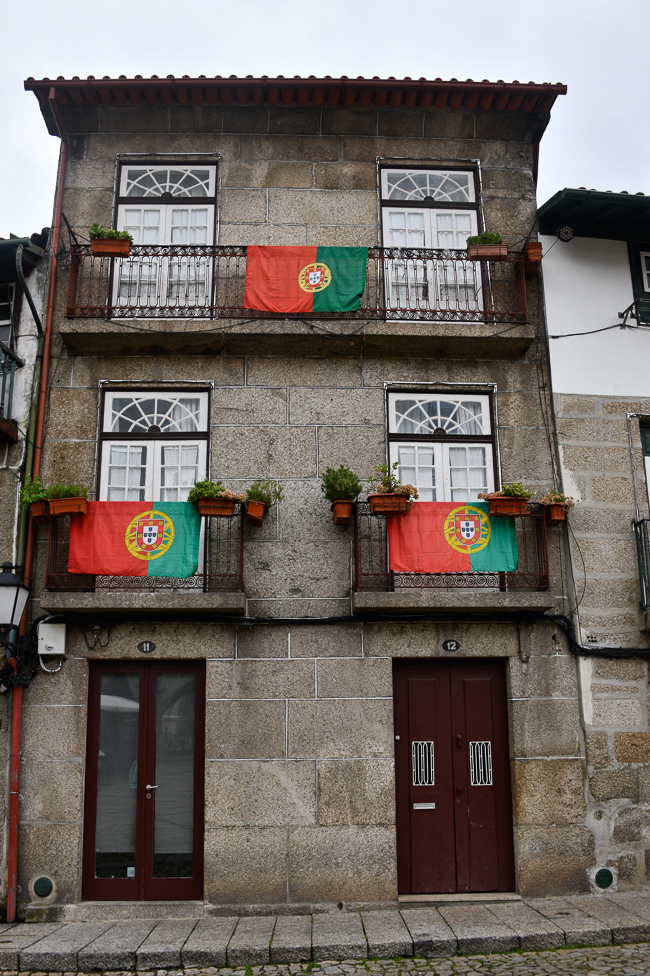November 2022
Guimarães was originally settled in the 9th century and called Vimaranes. It is thought the name may have had its origin in the warrior Vímara Peres, who chose this area as the main government seat for the County of Portugal which he conquered for the Kingdom of Galicia. Guimarães is often referred to as the “birthplace of Portugal” or “the cradle city” because it is widely believed that Portugal’s first King, Afonso Henriques, was born here. It is the location of the Battle of São Mamede, the seminal event in the foundation of the Kingdom of Portugal.
One of the more imposing buildings in Guimarães sits on a hill. It is the Palace of the Dukes of Braganza. Built on the orders of Alfonso, Count of Barcelos in the first quarter of the 15th century (likely 1420 to 1422). Barcelos was the illegitimate son of John I and his line would occupy this Burgundian-style residence for the next 200 years. Catherine Braganza the future wife of England’s Charles I, grew up here. Today the building is a museum, with items from collections around Portugal.
The castle this was taken from dates to the 10th century and lies in ruins, but with a nice walk along the parapet with wonderful views of the town.
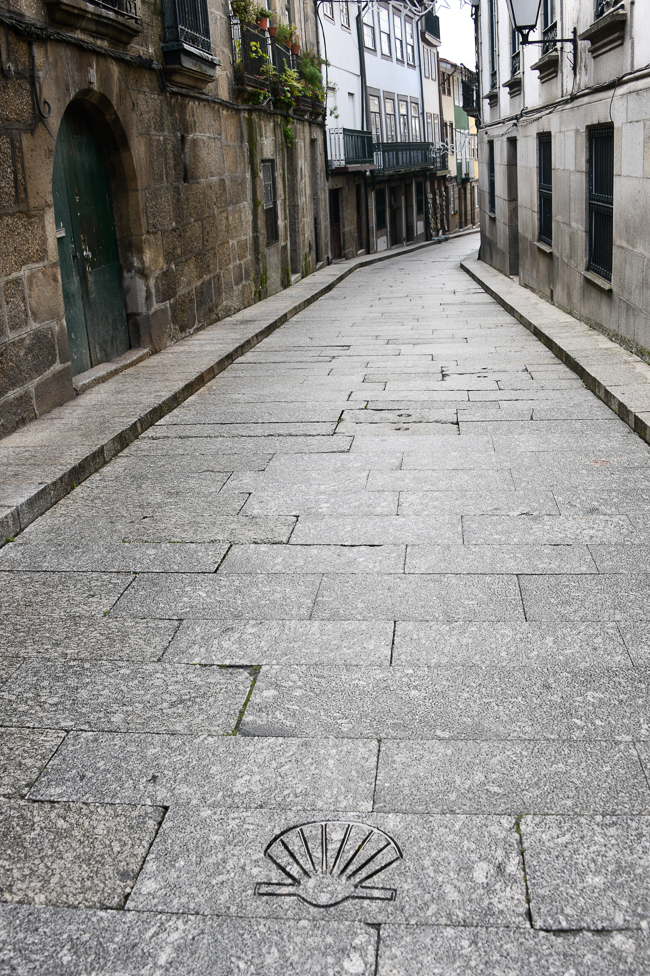
One of the medieval streets of Guimarães. Notice the shell in the foreground, a sign of the Camino de Santiago.
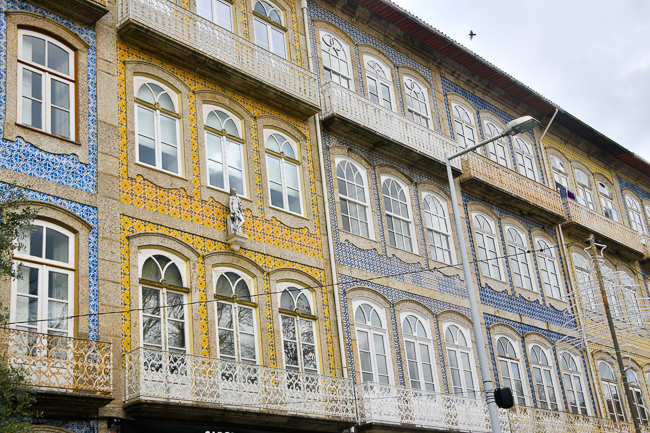
Homes in Guimaraes covered with azulejos
Largo da Oliveira
Our hotel, Hotel Oliveira, sits on the square which gets its name from the olive tree growing in the middle of the square.
Behind the tree one can see the Gothic monument, Padrão do Salado.
This small pavilion was built in the 1300s on the orders of Afonso IV. It’s a memorial for the Battle of Salado, fought in 1340 by Portuguese and Castilian forces against Moorish forces in Tarifa.
The Christian armies were led by King Afonso IV of Portugal and King Alfonso XI of Castile. Opposing them were armies led by Sultan Abu al-Hasan ‘Ali of the Marinid dynasty and Yusuf I of Granada.
As a result of the war, never again was a Muslim army able to invade the Iberian Peninsula. Meaning that control of the Straits of Gibraltar was now held by the Christians, specifically the Castilians and the Genoese.
Once Lisbon became the capital city of Portugal, Guimarães languished. This is what helped keep the city’s medieval character intact. The ancient walls were demolished in the 19th century when the emphasis was put on urban planning and sanitation. Today the city is a UNESCO World Heritage site.
Zona de Couros
Outside the city walls lies the Zona De Couros, the former tanning and leather-making district of the city.
The Portuguese tanning industry has its roots in the city in the Middle Ages. Hides originally came from the area but later they were imported from Portuguese colonies such as Brazil, Angola, and Mozambique.
The industry was a major employer during the 19th and 20th centuries, supplying the demand for leather in Europe during World War I and World War II.
Beginning in the 1960s, cheaper overseas products helped in the decline of the trade, along with the fact that it was dirty and strenuous work. The factory closed its doors for good in 2005.
The small river that passes through the area is referred to in documents from the 12th century, and in 1151 was called the “rivulo de corios”
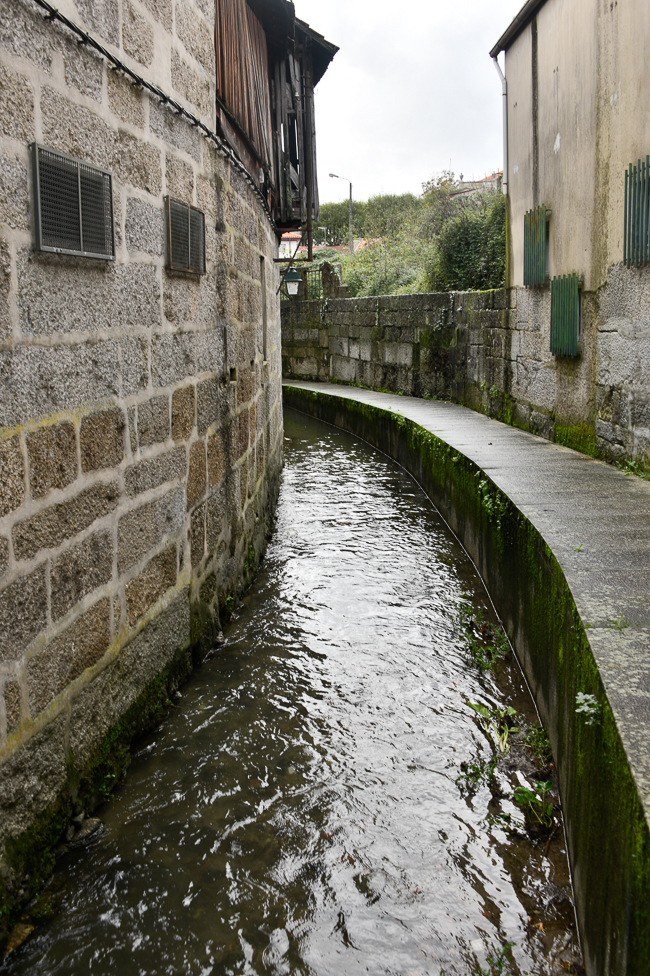
The” rivulo de corios” now the Couros river, forms a natural drain for the city, and once bore the wastewater from the tanneries and the waste from its workshops as well as the domestic waste from the area.
It can be somewhat discombobulating to come across these rather dour images when one rounds a bend in Guimarães while strolling. Erected in 1727 there were originally seven chapels in Guimarães as Stations of the Cross, today there are only 5.
